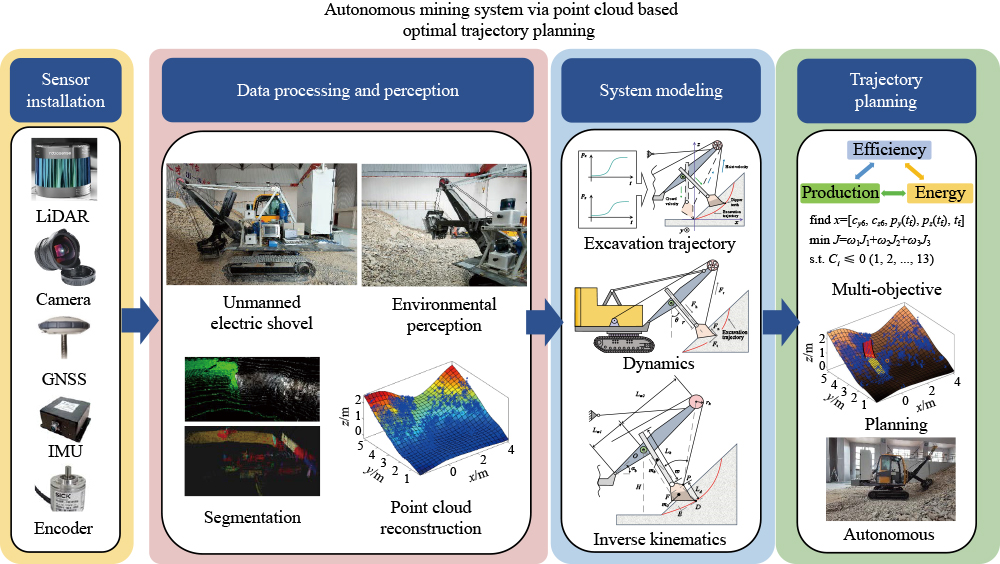In the field of autonomous excavation, environmental perception and excavation trajectory planning serve as the foundations for the development of autonomous excavation because they directly influence the operation performance [
14–
18]. Currently, some works have been carried out and made some strides. For environmental perception, the primary objective is imaging terrain and objects in the work space, including trucks, bulldozers, and ancillary equipment. Nowadays, the range-scanning sensors, such as LiDAR, are used for terrain mapping and surface mining automation applications. Phillips et al. [
19] introduced four types of LiDAR and summarized their advantages and limitations in the application of automatic mining. Phillips et al. [
20] further analyzed four types of LiDAR behavior in the presence of dusts when mining. Green et al. [
21] proposed a Bayesian method for verifying the accuracy of estimated truck poses based on a pair of planar LiDAR sensors. D’Adamo et al. [
22] proposed a maximum sum of evidence (MSoE) method for registering LiDAR sensors to moving platforms; it yields more accurate registration solutions than the classical methods. Dunbabin and Corke [
23] used LiDAR to generate terrain maps of the environment surrounding the shovel, thereby assisting in shovel planning and collision detection. In terms of excavation trajectory planning, Awuah-Offei and Frimpong [
24] established an optimization model of the electric shovel to minimize the energy per unit loading rate in excavation process based on kinematics and dynamics, and the optimal speeds of the crowd arm and hoist rope are obtained by using steepest descent method. Bi et al. [
25] proposed a multiobjective optimization model, which considers digging time and energy consumption per payload as objects, and then a two-phase optimization method to apply to reduce the mining time and energy consumption. Jud et al. [
26] developed a mapping approach for excavation trajectory planning based on an improved state machine. Son et al. [
27] proposed a novel excavation trajectory planning method for autonomous excavators based on human expert knowledge. Lee et al. [
28] proposed a two-phase motion planning framework for excavators. Wang et al. [
29] analyzed corresponding forces in excavation and proposed a polynomial-based trajectory planning method to minimize the energy consumption. Wang et al. [
30] further improved the approximation method about mining trajectory by using radial basis functions (RBF) model, which yielded a better performance than other conventional methods. Although some studies have been conducted to improve excavation performance, most studies are only carried out under simulation conditions rather than practical equipment, and the internal connection between environmental perception and autonomous excavation are not yet established. More importantly, most works neglect the real-time requirements of the excavation trajectory planning, thereby hindering its application in practical autonomous excavation.



















